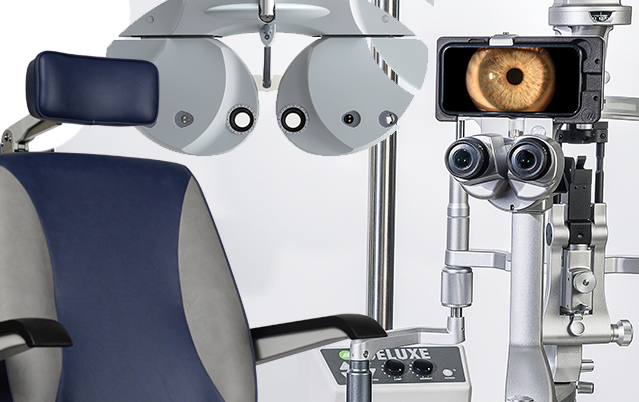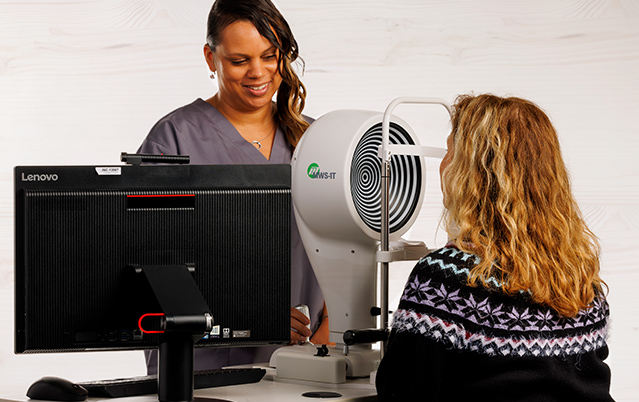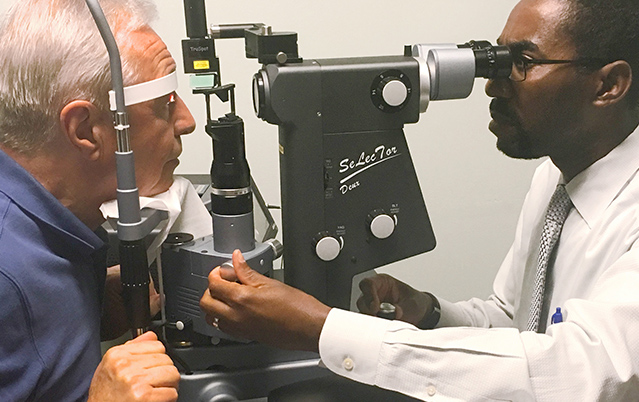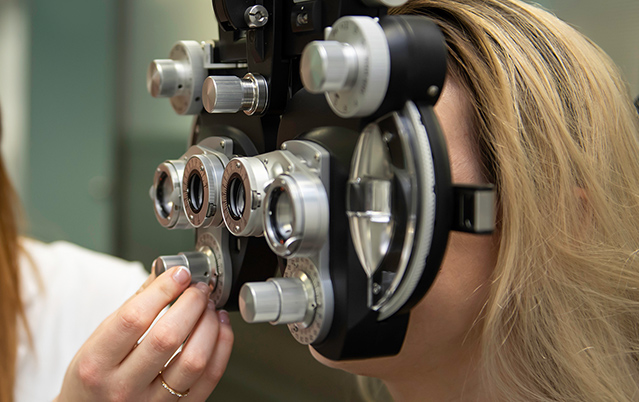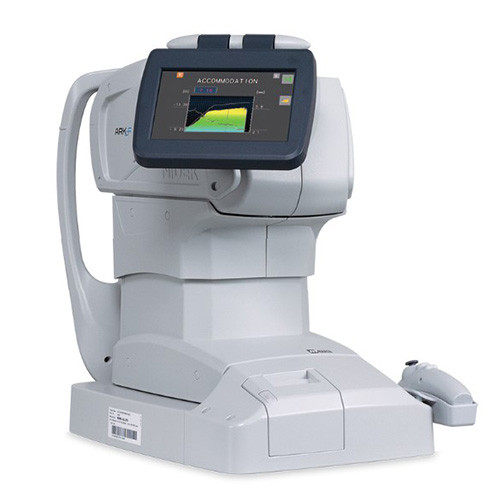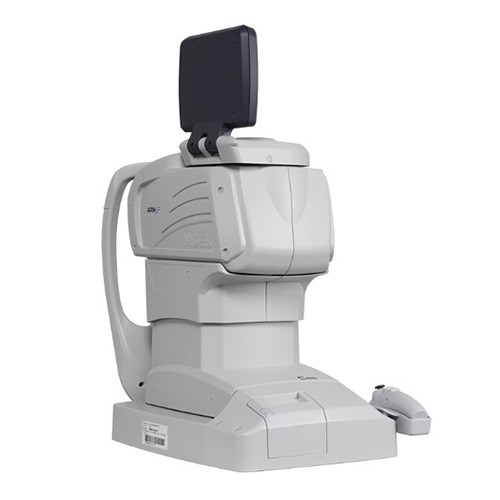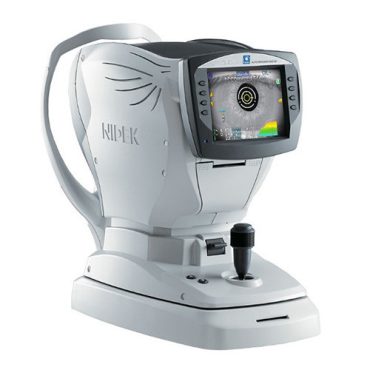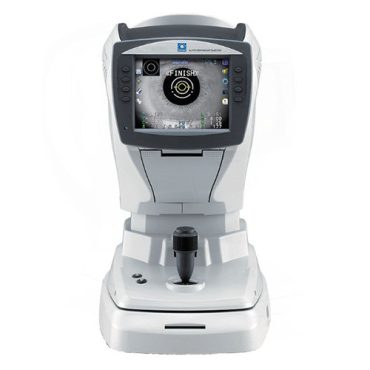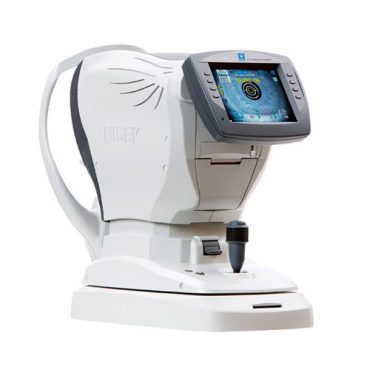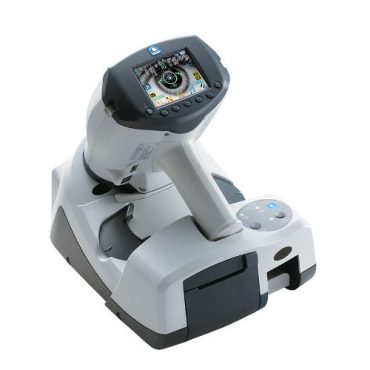Marco ARK-F Autorefractor & Keratometer
Brand: Marco
SKU: AR0NKARKFC
Price:
The ARK-F Autorefractor & Keratometer is a fully automatic instrument with voice command guidance for staff and patients.
Free
MSRP:
The Marco ARK-F Autorefractor & Keratometer is a fully automatic device with a wide area of refraction (up to 6mm) and mire rings for keratometry measurements. It objectively measures accommodation and captures retro illumination images. Super Luminescent Diode technology offers sharper, clearer images than LED. A gentle voice command guides staff and patients.
FEATURES
- Automatic eye detection and chinrest adjustment
- Automatic transition between eyes
- Super Luminescent Diode (SLD) for sharper images compared to LED
- Accurate data even through many cataracts
- Eye Tracking system provides X-Y-Z tracking for superior alignment and focus
- Large pupil zone imaging method (up to 6mm diameter)
- Accommodation measurement
- Keratometry measurement with mire ring to reduce eyelid artifacts
- Retro illumination illustrates media opacity in both the cornea and lens
- 7” LCD, 360-degree swivel and tilt screen
- Optional remote control and control from an iPad app
Fully Automatic Measurement
Fully automatic operation includes auto start, auto chin rest adjust, auto detect, auto X-Y-Z align, auto capture, and auto eye transition. Manual measurement is also an option.
Super Luminescent Diode (SLD)
Super Luminescent Diode is an edge-emitting semiconductor light source based on super luminescence. It uses the high power and brightness of laser diodes providing a sharper image compared to LED. It allows for quick and accurate measurements of patients with cataracts, corneal opacities, IOL’s, and post LASIK.
The Eye Tracking System
The Eye Tracking System provides X, Y, Z axes tracking for superior alignment and focusing. The ARK-F automatically initiates measurement at the optimal alignment.
Accommodation
Accommodation testing helps to detect early presbyopia, latent hyperopia, and children with reading difficulty.
Large Pupil Zone Imaging Method
The large pupil zone imaging method allows for the measurement of a wider area refraction (up to 6mm diameter) and can indicate the difference between the wide area refraction and central area refraction of up to 3.5mm diameter. These pupil diameters are measured simultaneously, and the difference of the measurement allows assessment of the effect of pupil size such as a vision in dim light.
Retro Illumination
The ARK-F Autrefractor & Keratometer features retro illumination which illustrates media opacity in both the cornea and lens.
SPECIFICATIONS
| Objective Spherical Refractive Error | -30.00 to +25.00 D (VD = 12 mm) (0.01/0.12/0.25 D increments) |
|---|---|
| Cylindrical Refractive Error | 0 to ±12.00 D (0.01/0.12/0.25 D increments) |
| Cylinder Axis | 0 to 180° (1°/5° increments) |
| Minimum Measurable Pupil Diameter | ø2 mm |
| Corneal Curvature Radius | 5.00 to 13.00 mm (0.01 mm increments) |
| Corneal Refractive Power | 25.96 to 67.50 D (n = 1.3375) (0.01/0.12/0.25 D increments) |
| Corneal Cylindrical Power | 0 to ±12.00 D (0.01/0.12/0.25 D increments) |
| Corneal Cylinder Axis | 0 to 180° (1°/5° increments) |
| Pupillary Distance Measurement | 30 to 85 mm (1 mm increments) (Near point PD: 28 to 80 mm at WD = 40 cm) |
| Corneal Size Measurement | 1.0 to 14.0 mm (0.1 mm increments) |
| Pupil Size Measurement | 1.0 to 10.0 mm (0.1 mm increments) |
| Accommodation Measurement | 0 to 10.00 D (0.01/0.12/0.25 D increments) |
| Retro Illumination Image | Standard |
| Vision Comparison | Available with scenery chart |
| Auto Tracking | Fully automatic 3D tracking (X-Y-Z directions) |
Related Products
A Division of Advancing Eyecare™
© 2025 Marco Lombart All Rights Reserved.
Account Information
Products & Services
Get to Know Marco Lombart
Marco Lombart is committed to keeping our site accessible to everyone. We welcome feedback on ways to improve the site’s accessibility so it is easy for everyone to navigate.
Free shipping is only available for online orders in the continental United States.
Certain exclusions apply.
Exclusions include, but are not limited, to the following products:
Acuity Systems & Projectors, Chair & Stand Accessories, Autorefractors, Lensmeters, Keratometers, Portable Slit Lamps, Stools, Tables, Tonometers, Trial Lens Sets.
- Clearance
- Exam Lane
- Pre-Test
- Diagnostic/Imaging
- Treatment & Surgical
- Lab & Dispensing
- Supplies & Accessories
- Pre-Owned
- All Pre-Owned Equipment
- Pre-Owned Acuity Projectors
- Pre-Owned Autorefractor/Keratometers
- Pre-Owned Biometers
- Pre-Owned Indirect Ophthalmoscopes (BIOs)
- Pre-Owned Chairs & Stands
- Pre-Owned Lens Edgers
- Pre-Owned Lensmeters
- Pre-Owned Manual Keratometers
- Pre-Owned OCTs
- Pre-Owned Ophthalmic Lasers
- Pre-Owned Refractors & Phoroptors
- Pre-Owned Retinal Cameras
- Pre-Owned Slit Lamps
- Pre-Owned Tonometers
- Pre-Owned Ultrasounds
- Pre-Owned Visual Field Perimeters

